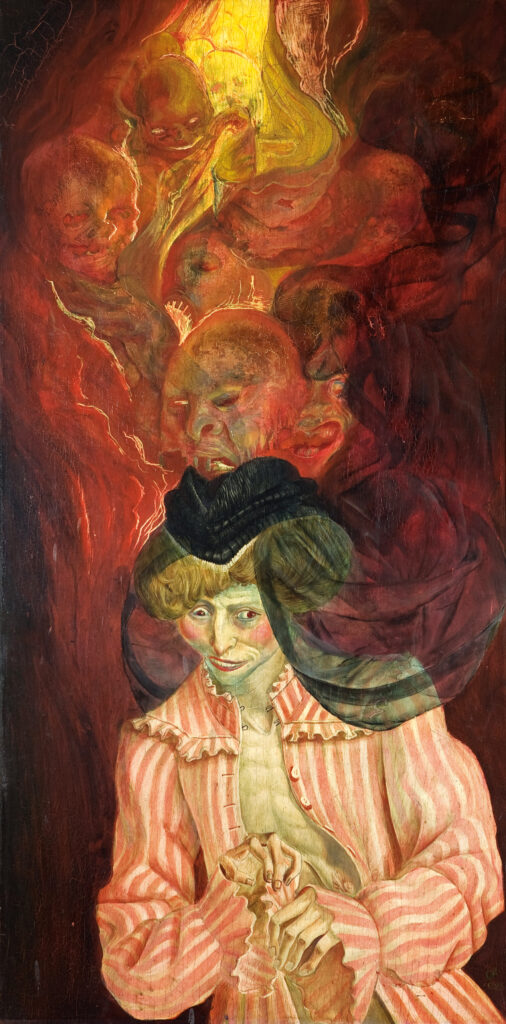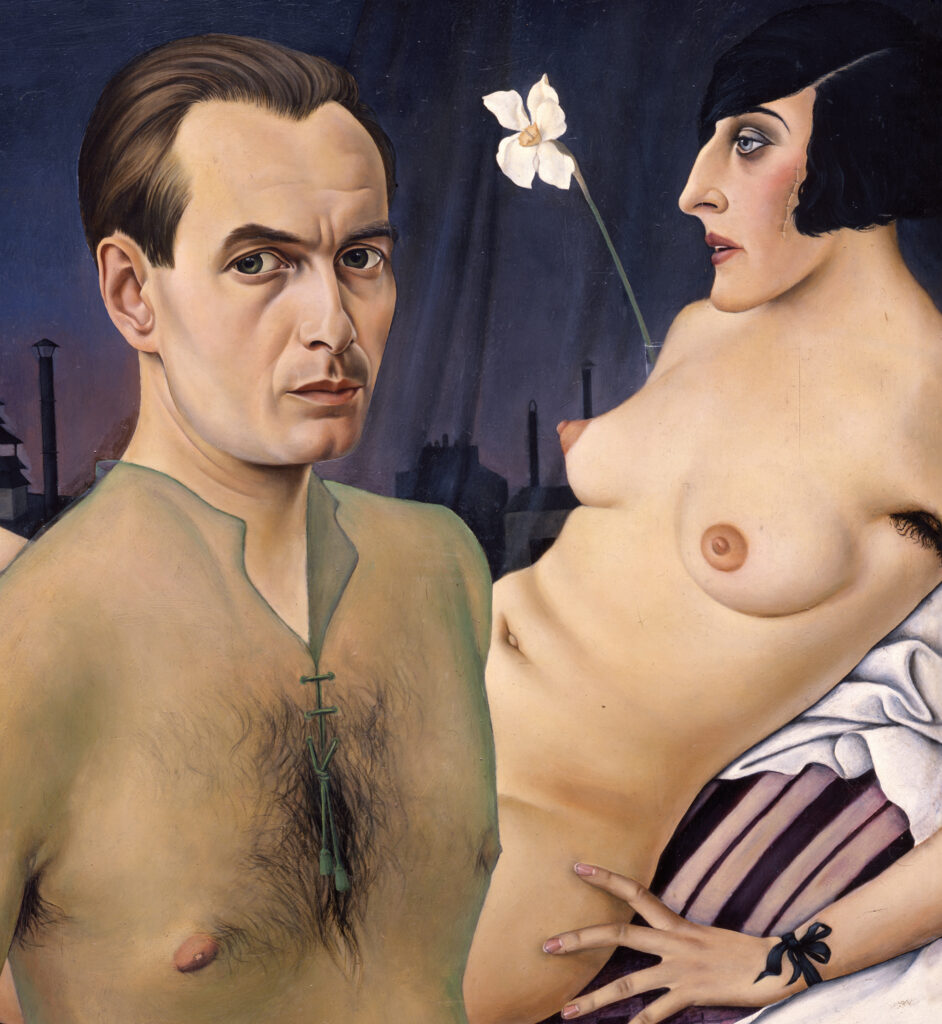‘Splendor and Misery’ Stages a Dark Dance at the City of Freud and Mozart
The Leopold’s exhibition of paintings comes as Weimar is back in vogue, its fragility and libertinism echoed in our own era.

‘Splendor and Misery: New Objectivity in Germany’
Leopold Museum, Museumsplatz 1, Vienna, Austria
Through September 29, 2024
VIENNA — “Splendor and Misery,” at the Leopold Museum, compels attention like a slow motion nightmare. It shares premises with the fin-de-siècle glories of Gustav Klimt and Egon Schiele, but the show tallies a world bending toward the abyss. Some 150 works register dissent with Expressionism’s fuzzy moodiness. These are paintings of society, albeit of its dregs. If this art is backlit by the final strobe lights of a dying party, it also thrills with a lurid luster.
The show, which covers German art from the 1920’s and 1930’s, is bounded by world wars and superimposed on the Roaring Twenties and Great Depression. The works are desperate and depraved, though nowhere near as sinister as National Socialism, which lowered a jackbooted period on this dispensation of decadence. The Leopold’s exhibition is timely, as Weimar is back in vogue, its fragility and libertinism suited to our own roiled era.
These paintings, it must be said, are degenerate. They emit a freakish glow and double as backstage passes to the carnival. Many capture violence visited upon women, just years before the greatest crime in history would render even the most grisly serial killer almost quaint. The director of the Leopold and the show’s curator, Hans-Peter Wipplinger, writes that “abysmal experiences” demand “unsentimental, sober, concrete, and purist” art.

That’s why the artists on display, among them Max Beckmann, Otto Dix, Rudolf Schlichter, George Grosz, and Felix Nussbaum, became exponents of a movement called “New Objectivity.” A world coming apart demanded rigor. Take Grosz’s “Gray Day,” which depicts an official and a disabled veteran, separated by a broken wall. Chimneys belch in the background. Bureaucracy has done away with whatever transcendence the war spared.
Otto Dix’s “The Madwoman” is an almost cartoonish invocation of what Sigmund Freud called the “uncanny.” It is as if beneath the surfaces of “Gray Day” a host of demons lurk, pent up and demanding their day. A different tone is achieved in Christian Schad’s “Self-Portrait With a Model.” The artist and woman inhabit what appears to be a post-coital moment, but their gazes are directed at different galaxies. Things will get worse, one fears.
That premonition is realized in Schlichter’s “Sex Murder,” where a mortally wounded woman is splayed on a bed. It is a painting that is also a crime scene. A variation on mortality is presented in Dix’s “Old Couple,” where a grotesque tableau of skin and bones grasp and leer. It is an apt illustration of Freud’s speculations on Eros and Thanatos, the dance of death and desire. Beckmann’s “Nocturnal Encounter” demands a hard look to determine its plot.
Many of these paintings display an interest in replication, as if the human being was just another product of the assembly line. Karl Hofer’s “Tiller Girls” borrows something of Picasso’s interest in the juxtaposition of body and mask. The paintings’ subjects strike the same pose, and possess the same dead eyes. The proliferation of women in “Takka-Takka Dances” suggests an erotic fantasy, but also the threatening overpopulation of a hallucination.

Men, too, are expendable. Anton Räderscheidt’s “Self-Portrait in Industrial Landscape” is an unpitying summoning of automatons and a repudiation of what he takes to be the myth of the heroic artist that runs from Orpheus to Michelangelo to, say, Monet before coming upon the maw of World War I. A counterpoint is Lea Grundig-Langer’s “Unemployed,” which zooms into a single downcast visage of misery and despair.
The show’s most haunting image, though, is Nussbaum’s “The Organ Grinder,” from between 1942 and 1943. Nussbaum, a Jewish surrealist murdered at Auschwitz, depicts himself sitting on a street that has become cluttered with bones and ominous black flags. He is at death’s address. “Camp Synagogue,” from 1941, dates to his time in the Saint-Cyprien transit facility, and frames faith as persisting against darkness. It’s a macabre kind of sacred splendor.

